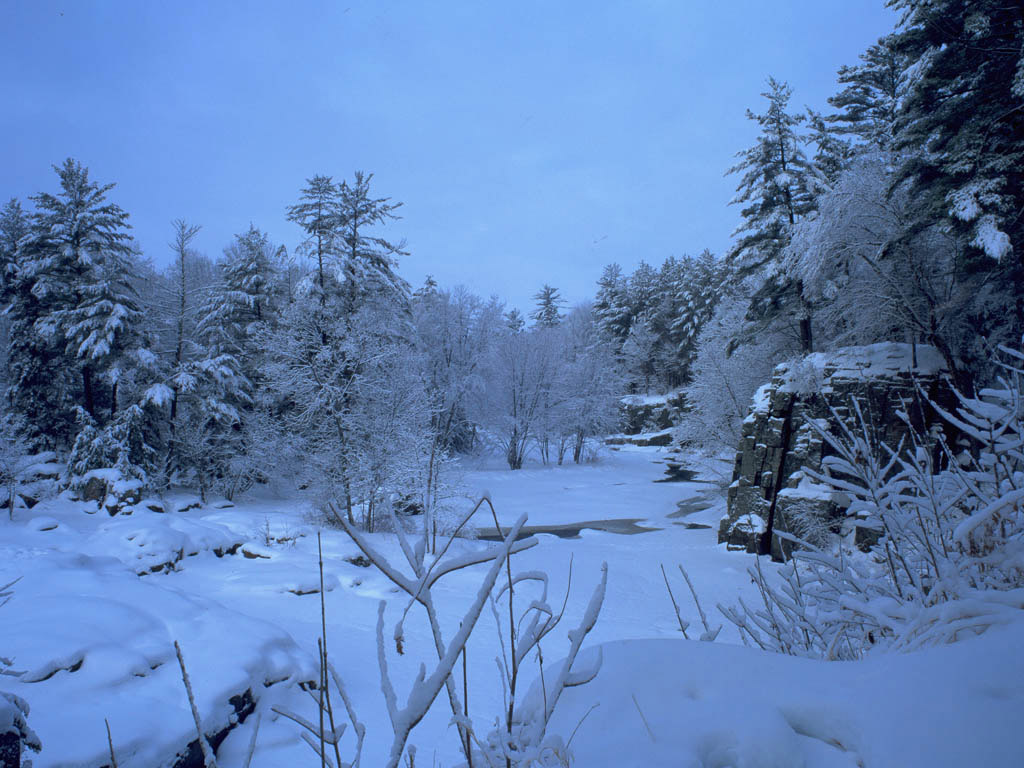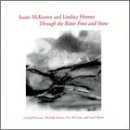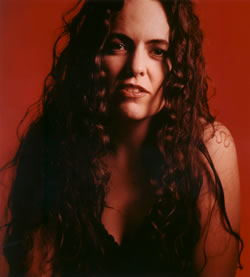Centuries of Sentiment and Celebration
By Christopher Hill
IF ON A WINTER’S NIGHT…
Sting
Deutsche Grammophon
Released 2009
THROUGH THE BITTER FROST AND SNOW
Susan McKeown & Lindsey Horner
1-800 Prime CD
Released 1997Over the years, the seasonal mood has been shotgunned into unions, more or less unnatural, with every known variety of popular music. You might think you’ve got to pretty much work yourself into contortions to do something distinct with a Christmas album at this point in time. But not necessarily. All you really need is the merest hint of feeling for the season, a dash of concept, and a few decent players willing to throw themselves into the spirit of things, and--able as you are to ride the momentum of centuries of sentiment and celebration--you can do pretty well without an especially visionary take on the season. And then every once in a while, an artist happens down the Christmas trail through whose senses we can feel the season freshly; combine that with those aforementioned centuries of festive associations, and you can really have something.
Amidst the glut, the jazz Christmas record has a pretty creditable record. Check out an album such as Verve Presents: Very Best of Christmas Jazz for a taste of what jazz has done with the holidays. Some jazz holiday arrangements have become seasonal standards. Recall Vince Guaraldi’s Peanuts TV soundtracks; or, at another end, Sinatra’s Christmas records. Jazz improvisation forces one to take a song seriously, to work at exploring its unexpected corners; and so jazz excels at bringing familiar standards back to life, just what is called for at this time of year.
Sting, from If On a Winter’s Night, ‘Christmas at Sea’ (live at Durham Cathedral)A performer with a sense of himself as a sophisticated soul whose muse or whose management calls him to do a Christmas album would almost naturally follow the jazzy path into the season. And so in fact has Sting, who over a long solo career has established himself as pop’s cerebral light jazzman. With his holiday CD, If On a Winter’s Night, he too finds himself in the jazz clearing in the Christmas woods. He is not alone. With him is a trio of Anglo-Scottish folk musicians on fiddle, Northumbrian pipes, melodian and Scottish harp; a cellist, a violinist, two trumpeters, two percussionists, an ancient music vocal ensemble, a second guitarist and a pair of backup singers.
By another and very different route Susan McKeown, one of the most remarkable contemporary voices in British folk music, arrived in that clearing a few years back, with her friend and arranger Lindsey Horner, a standup bass player with a taste for Astral Weeks-era Modern Jazz Quartet atmospherics. They too had a vision of a jazz-inflected Christmas album on their minds, but one of a very different sort.
Both albums drew at least half their material from Medieval British church and folk music. Both aim to bring the mood into the present with a clutch of jazzy originals. Both cover “There Is No Rose of Such Virtu.” But from there they take diverging paths.
Sting discusses the conception of If On a Winter’s Night and performs bits of its songsSting starts the proceedings with “Gabriel’s Message” a moody Medieval plainchant-like carol, that he covered in the ‘80s on the Do They Know It’s Christmas charity compilation. Back then Sting’s interpretation was mysterioso and electronic. Now it’s music for the urban fireside, acoustic guitar and muted trumpet in a clean quiet reading. Next Sting stakes his Olde English cred on turf previously claimed by the Watersons (and Peter, Paul and Mary) in “Soul Cake” or “The Souling Song.” Where the Watersons made you feel each ice-crusted muddy rut where the souling boys wandered begging from door to door, the perspective of Sting’s uptempo, merry version is from the indoors, where the strains of song from the street makes the fireside that much more delicious.
“Lo, How a Rose E’er Blooming” is simply beautiful, as the Michael Praetorius melody practically dictates. In the second verse Sting, backed by reverential choirs, starts to speak the lyrics, which veers for a panicky moment near to kitsch, but actually works through a combination of Sting’s apparent sincerity and the poignant tune.
“The Burning Babe” is a gaily Latin-inflected show tune-like setting of Robert Southwell’s metaphysical poem, but the experiment doesn’t pay off. The novel arrangement doesn’t illuminate the lyrics in any particular way--the juxtaposition is not particularly suggestive, just sort of strange.
On the other hand, “Balalulow” is the kind of re-visioning of a traditional song that Christmas music-makers seek for--a kind of dreamlike, bluesy reading that brings an ancient lyric to new life.
I should mention that something very strange has happened to Sting’s voice. On about half the songs here, he dips down into a register you’ve never heard from Sting before that sounds like he’s developed a second larynx, a damp resonating jowl-y basso somewhere between Marley’s ghost and Dick Nixon’s.
‘Auld Lang Syne,’ Susan McKeown and Johnny Cunningham—‘Robert Burns’s old tune that celebrates and weeps for all lost days…’In terms of musical tactics it might initially seem like Susan McKeown and Lindsey Horner are trying something similar with Through the Bitter Frost and Snow. But whereas Sting stays well within his and his audience’s comfort zone (except for that subterranean larynx), McKeown and Horner are deliberately conducting an experiment in holiday tradition.
Through the Bitter Frost and Snow began as a one-off, an experiment featuring one of the more adventurous of British folk singers and jazz bassist Lindsey Horner. The idea was to record a version of “Auld Lang Syne” that was at once traditional--hewing to a 19th century melody and using Robert Burn’s lowland Scot’s dialect—and experimental, with Horner’s jazz bass sinuously bending the song in uncharted directions. The result was that the Victorian pathos of the old tune came alive, in all its damp-eyed glory. Played on NPR on New Year’s Eve in 1997, it triggered a wave of calls wanting to know where they could get the record. It didn’t exist. But McKeown and Horner quickly got into a studio to make one.
In Celtic culture, women are in charge of mourning the dead, and McKeown’s voice carries a full cargo of Celtic gloom, which is why this record probably has a built-in limit to the number of iPods and firesides it graces. McKeown is serious about the cold and the dark. She seems to genuinely possess the age-old fear of the dwindling of the light and the apparent triumph of the dark. On some of these songs you can hear an archaic female rage at the way the iron rule of the sterile cold, personified in her breathless, panicky “The Winter King,” runs roughshod over the growing things and the flowing waters of the fecund seasons. There is no love of winter itself, as you hear in a song such as “Wintergrace,” on Jean Ritchie’s classic Kentucky Christmas Old and New. McKeown’s love is for the festival—for her Christmas is a breaking through of almost tropical summer into the heart of darkness, a pledge that life and growth will come back, just as the child is borne at the darkest moment of the year.
It’s kind of like what you might hear at a little jazz club that you drop into off the slushy street for some holiday cheer in the early December dark. A jazz club that seems to have just appeared on your usual walk from the office to the train station, where a woman and her accompanist are singing the commuters off to the night train. And then all of a sudden, some ancient spirit breaks through and the stage becomes a bower of dark green shiny pointed leaves and she’s singing “Green Groweth the Holly” with these keening harmonies last heard in pop music when June Tabor and Maddy Prior teamed up as the Silly Sisters. And before that maybe up on the Scottish Borders.
She goes deeper into the spirits of the season with the “Christ Child Lullaby,” a tune first written down in the late 19th Century in the Gaelic-speaking Western Isles of Scotland. A tune for which words like haunting are invented. At this season, the gray Atlantic waves break and toss their spume high as melodies like this mingle with it around the Hebrides.
“There is No Rose of Such Virtu” veers off dizzyingly Eastward as McKeown/Horner translate this Middle English carol into a floral, tabla-thrumming processional from somewhere on the Indian sub-continent, an experiment in cross-cultural liturgical art (which Sting’s arrangement all but duplicates).
And lastly, they send us all out into the night, fortified with a few drams, with Robert Burns’s old tune that celebrates and weeps for all lost days, “Auld Lang Syne,” sung with great seriousness and tenderness with the bass walking alongside McKeown like a solicitous escort.
Susan McKeown and Lindsey Horner, ‘Green Grow’th the Holly, from Through the Bitter Frost and SnowMany musicians have ended up in the jazz clearing in the Christmas woods, Sting but the latest. The playing, production, most of the singing on If On a Winter’s Night are all top notch, but after all of his ethno-tasting and the international pop-jazz style he’s spent so many albums crafting, it’s just not possible for Sting to come to light on northern European Christmas music and illuminate it so deeply and richly as McKeown and Horner with their singular vision and resonant sound have done.
Susan McKeown & Lindsey Horner’s Through the Bitter Frost and Snow is available at www.amazon.com
Sting’s If on a Winter’s Night is available at www.amazon.com
Founder/Publisher/Editor: David McGee
Contributing Editors: Billy Altman, Laura Fissinger, Christopher Hill, Derk Richardson
Logo Design: John Mendelsohn (www.johnmendelsohn.com)
Website Design: Kieran McGee (www.kieranmcgee.com)
Staff Photographers: Audrey Harrod (Louisville, KY; www.flickr.com/audreyharrod), Alicia Zappier (New York)
E-mail: thebluegrassspecial@gmail.com
Mailing Address: David McGee, 201 W. 85 St.—5B, New York, NY 10024





